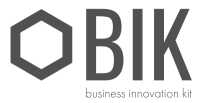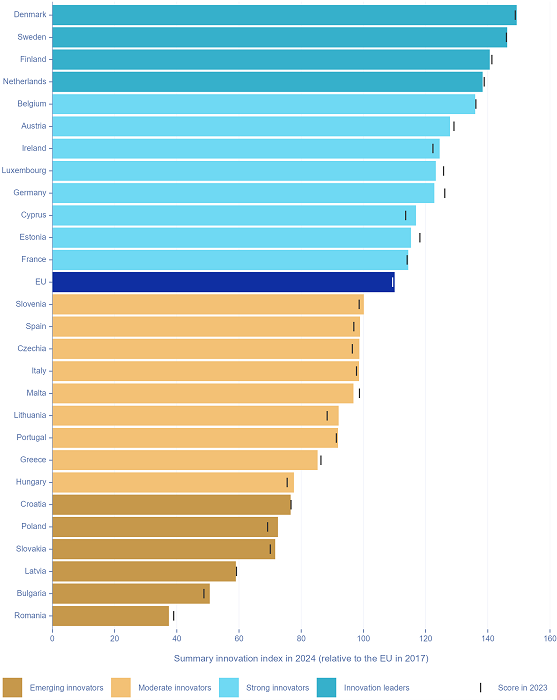Europe's innovation performance is constantly improving, but at different speeds between Member States
Denmark remains the most innovative EU country, followed by Sweden, which topped the rankings between 2017 and 2022
Publicado por CarmenDiaz
miércoles, 10 de julio de 2024 a las 15:04
The European Union's innovation performance continues to improve steadily, reaching a 10% increase since 2017 and 0.5% growth between 2023 and 2024. According to the 2024 edition of the European Innovation Scoreboard Innovation (SIE) published today, most EU Member States have boosted their innovation performance, but the increase varies considerably across countries.
Main conclusions
Between 2023 and 2024, national innovation performance has increased in 15 Member States, while it has decreased in another group of 11. Croatia remained stable. Compared to the last edition:
- Denmark remains the most innovative EU country, followed by Sweden, which topped the rankings between 2017 and 2022.
- Two countries now belong to a different results group. Estonia became a strong innovator following a steady growth pattern since 2017. Belgium, the innovation leader in 2023, moved into the strong innovator category, although it maintained its fifth position in the overall rankings.
A broader analysis, which includes other European countries and certain global competitors, shows a changing international landscape. Switzerland is the most innovative European country and South Korea remains the most innovative global competitor in 2024, while China has overtaken Japan and is progressively closing the gap with the EU.
In the global context, the EU maintains a strong position, demonstrating good results in most indicators, including SMEs introducing product and process innovations and environmentally related technologies. The EU continues to face challenges compared to its main global competitors in areas such as intellectual assets, collaboration between innovative SMEs and R&D spending in the business sector.
In the global context, the EU maintains a strong position, demonstrating good results in most indicators, including SMEs introducing product and process innovations and environmentally related technologies. The EU continues to face challenges compared to its main global competitors in areas such as intellectual assets, collaboration between innovative SMEs and R&D spending in the business sector.
Innovation leaders have particularly attractive research systems and are strong in digitalization. Strong innovators demonstrate significant strengths in their innovation ecosystems (product and business innovations). Among moderate innovators, there are a number of positive trends, in particular the development of research collaboration; whereas emerging innovators have shown an overall positive track record in terms of innovation performance, but continue to lag behind;
Although performance differences have narrowed slightly between strong innovators and moderate innovators between 2017 and 2024, they became more pronounced between innovation leaders and emerging innovators. There are also persistent geographical differences in innovation performance, with innovation leaders and most strong innovators found predominantly in Northern and Western Europe, and many of the modern and emerging innovators in Southern and Eastern Europe.
Although performance differences have narrowed slightly between strong innovators and moderate innovators between 2017 and 2024, they became more pronounced between innovation leaders and emerging innovators. There are also persistent geographical differences in innovation performance, with innovation leaders and most strong innovators found predominantly in Northern and Western Europe, and many of the modern and emerging innovators in Southern and Eastern Europe.
Fuente original del contenido:
COMISIÓN EUROPEA
https://ec.europa.eu/commission/presscorner/detail/es/ip_24_3666
10/07/2024 15:04 | CarmenDiaz


